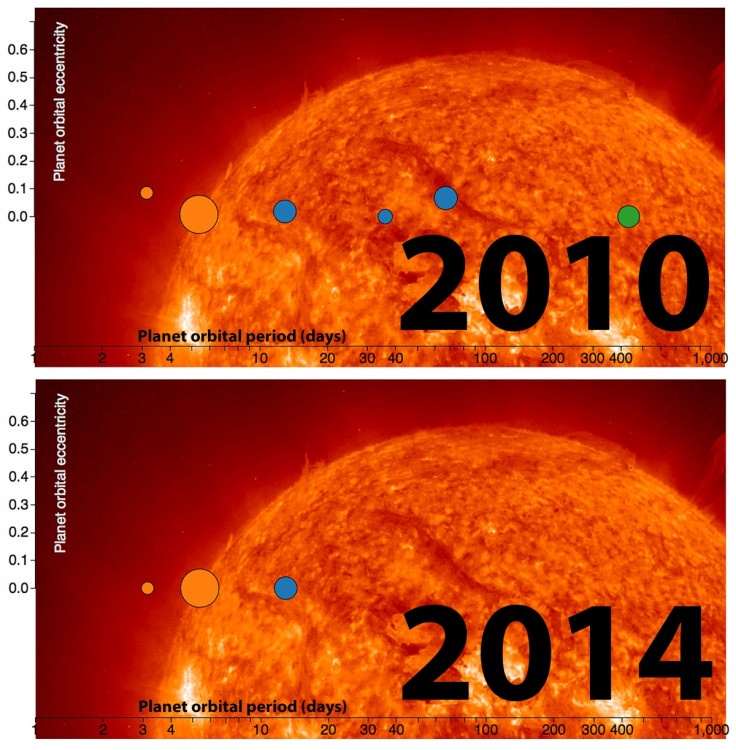Two Habitable 'Goldilocks Planets' Orbiting Gliese 581 Do Not Exist, Scientists Say

Two 'Goldilocks planets' orbiting a dwarf star 20 light years from Earth do not exist, scientists have said after debunking signals apparently originating from them.
Researchers at Penn State University were examining signals coming off planets orbiting Gliese 581.
The planets were believed to be habitable because they orbit the star at a distance where liquid water could potentially exist.
However, the scientists have now proved the mystery signals were, in fact, coming off the star itself.
Published in the journal Science in the online Science Express, researchers found that, on closer examination, Gliese 581 has three planets orbiting it – but none of them are definitely within the star's habitable zone, where water can exist in liquid form on a rocky planet like Earth
Lead author Paul Robertson said: "This result is exciting because it explains, for the first time, all the previous and somewhat conflicting observations of the intriguing dwarf star Gliese 581, a faint star with less mass than our Sun that is just 20 light years from Earth."
Previously, scientists had recorded wavelength signals and deducted they must be coming from two planets. However, the signal had been wrongly read, the scientists said.
When searching for planets, scientists use a technique involving 'Doppler shifts' – different wavelengths of radiation that emit as light.
The shifts can come from changes to a star's velocity caused by gravitational pulling from orbiting planets. However, they can also come from magnetic events, such as sunspots, giving astronomers a false clue about the planets.
Researchers analysed Doppler shifts in current observations of Gliese 581 and found that the ones thought to be from the Goldilocks planets were most sensitive to magnetic activity. By boosting the signals of the three innermost planets around the star, the scientists found that the original signals disappeared.
Suvrath Mahadevan, co-author of the paper, said: "The disappearance of these two signals after correcting for the star's activity indicates that these signals in the original data must have been produced by the activity and rotation of the star itself, not by the presence of these two suspected planets.
"Our improved detection of the real planets in this system gives us confidence that we are now beginning to sufficiently eliminate Doppler signals from stellar activity to discover new, habitable exoplanets, even when they are hidden beneath stellar noise. While it is unfortunate to find that two such promising planets do not exist, we feel that the results of this study will ultimately lead to more Earth-like planets."
© Copyright IBTimes 2025. All rights reserved.






















